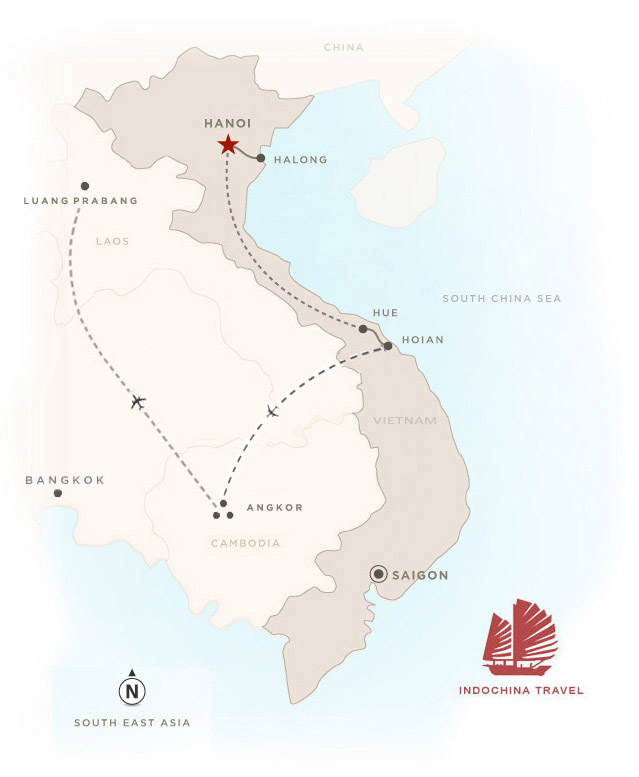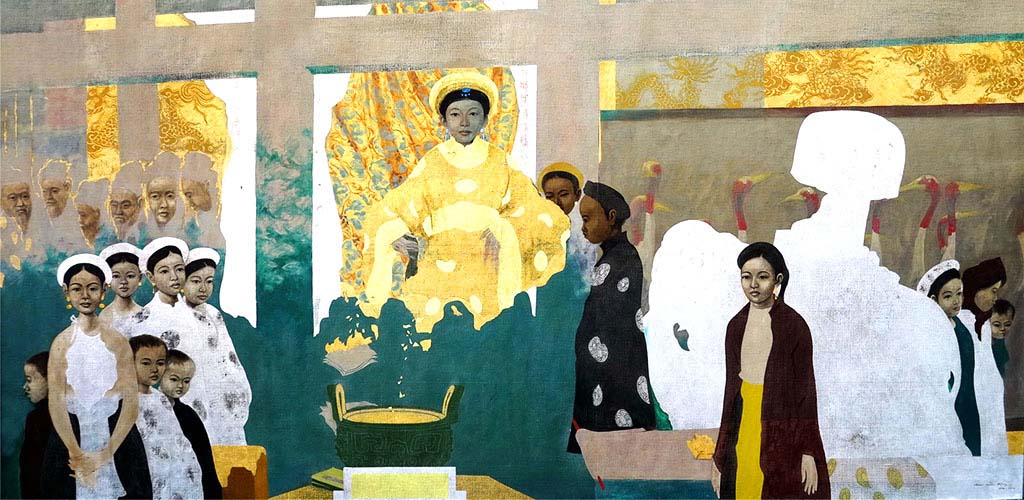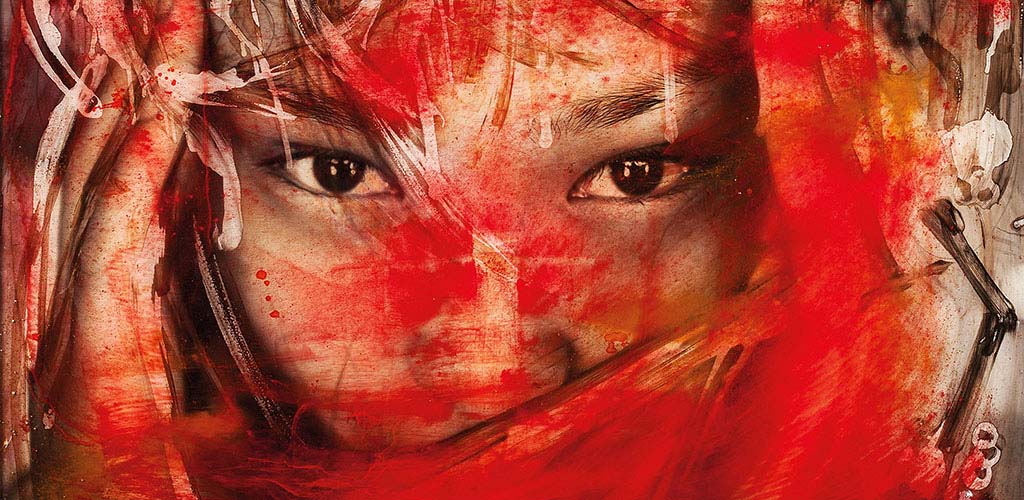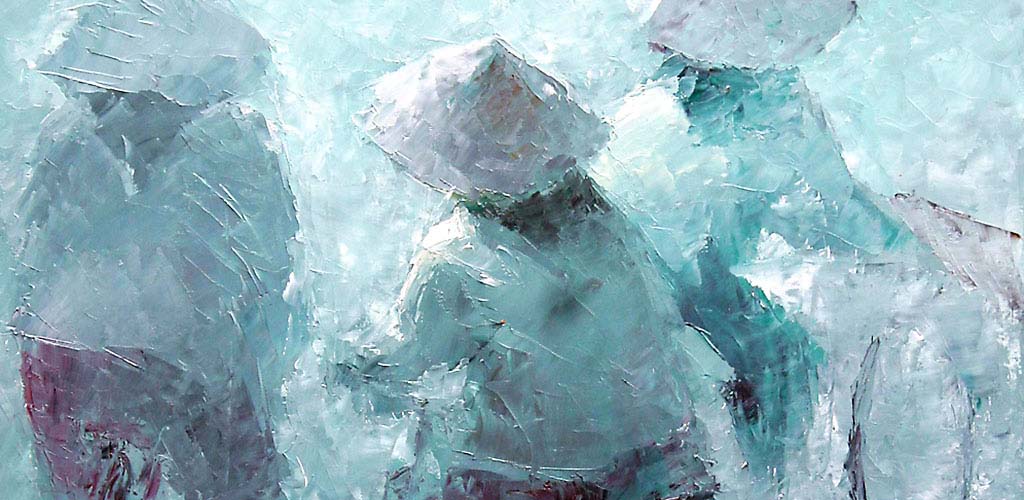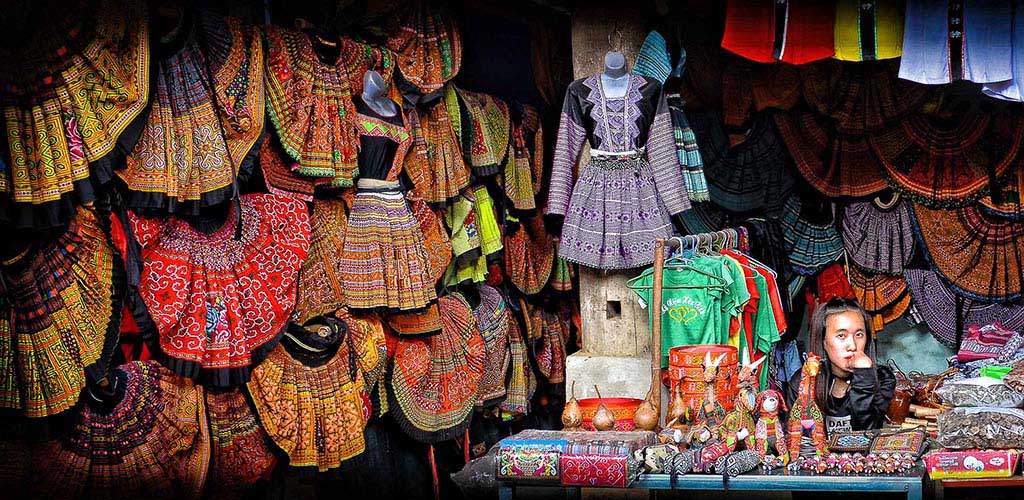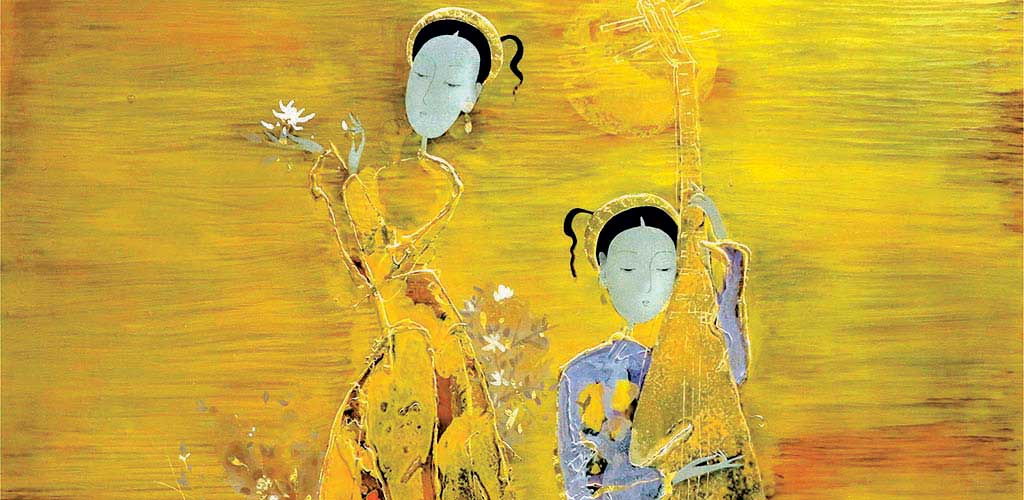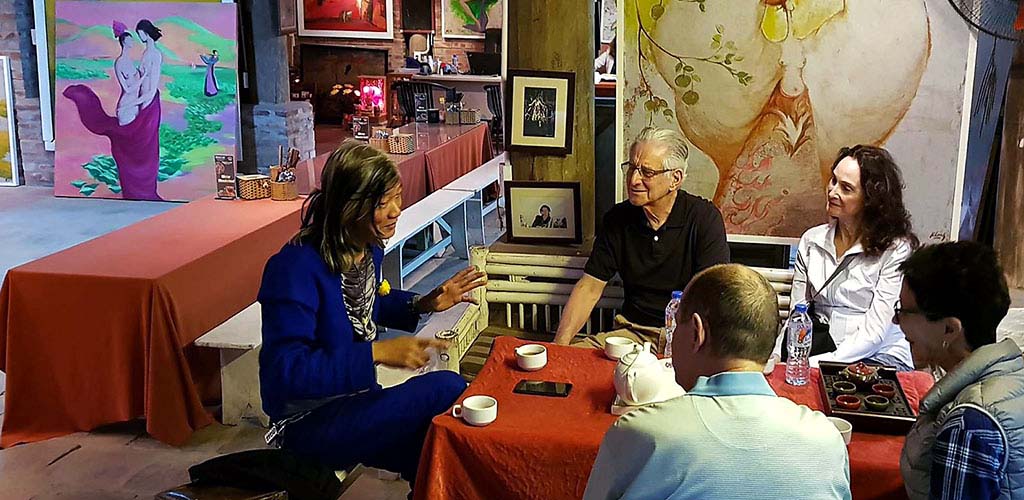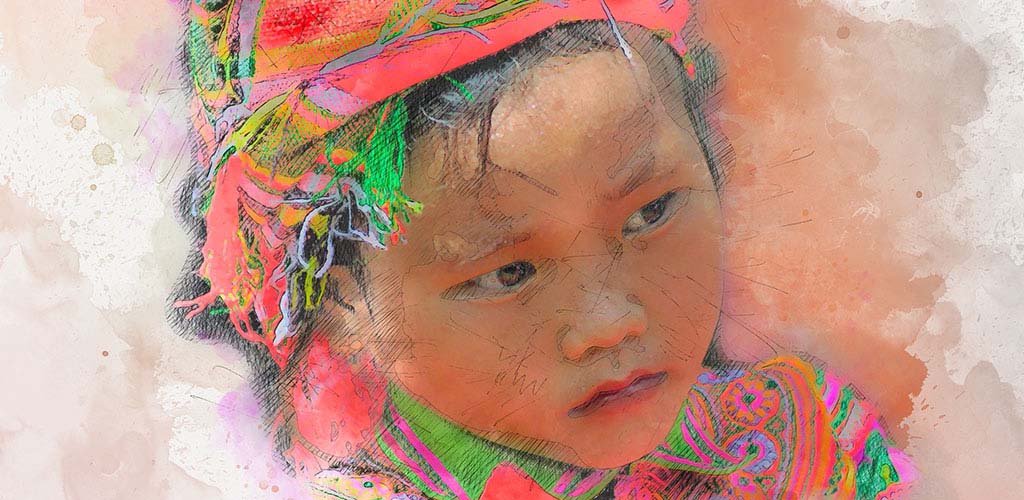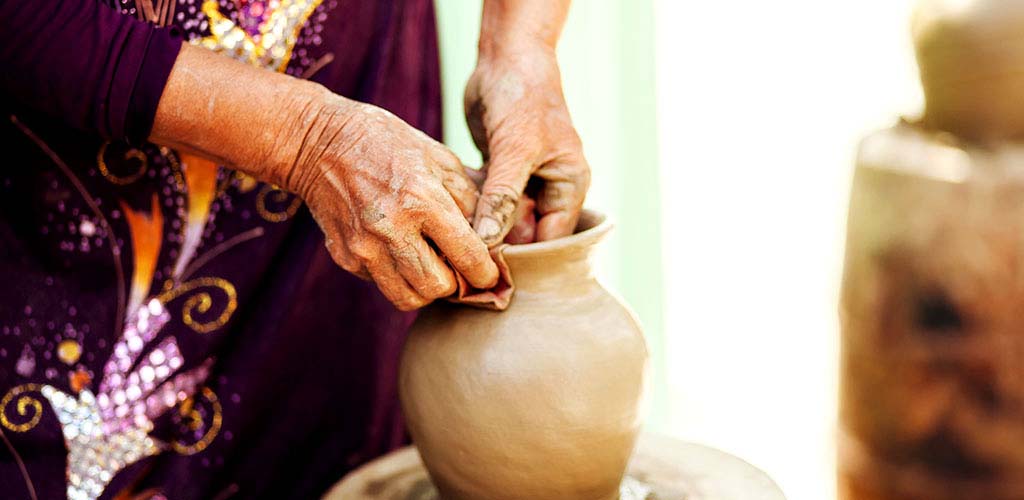ART ENCOUNTER TOUR ITINERARY
En route to Vietnam
Fly Cathay Pacific from London, Vancouver, New York, Los Angeles, or San Francisco to Hanoi, Vietnam (add-on segments can be arranged).
Optional pre-tour stopover in Hong Kong en route to Vietnam (or following trip). Explore this vibrant metropolitan port city that grew from a small British colony to a thriving city-state that served as the crossroads of Asia's trade for decades.
Bustling markets, busy boulevards, and tall buildings and mountains afford sweeping views of all Hong Kong. The perfect place for a short stopover of one to two days.
Contemporary gallery options in the Central include Hanart Tz, Grotto (featuring Hong Kong-based artists), Plum Blossoms (also carrying early Chinese textiles), and Shoeni, which is currently exhibiting "Destiny," a solo exhibition by Zhou Jin Hua. Further afield, in Mid-Levels on the quiet Prince's Terrace, are three up and coming galleries, including Korkos, 5 O.P.T Studio, and Chouinard. Antique textiles, including Tibetan, are featured at the Teresa Coleman Gallery (and subsidiary The Tibetan Gallery), and the Hanlin Gallery has a collection of antique Chinese and Japanese textiles.
Arrive Hanoi
Arrive at rustic, war-era Noi Bai Airport outside of Hanoi where you will be met for VIP expedited immigration, then meeting your guide and driver for transfer by private vehicle to the historic Metropole, our elegant hotel near central Hoan Kiem Lake, featured in Graham Greene's The Quiet American.
After your long flight, we have a organized the perfect jet-lag recovery treatment of spa, soothing massage at the Metropoles, followed by hot bowl of pho (soup).
This evening, we'll enjoy an orientation dinner with guest artists, in a lovingly restored 1920s colonial villa in the center of the Old Quarter featuring French-Vietnamese cuisine.
![]() Metropole (Deluxe room)
Metropole (Deluxe room)
Hanoi
This morning, exploring highlights of the stoic capital, venturing over to the high tree-lined boulevards French colonial-quarter to visit the Soviet-era Ho Chi Minh Mausoleum where "Bac Ho" lies in state, also visiting his nearby stilt home where he lived in and commanded his cabinet during the American war period. Afterwards, returning to the Old Quarter to meet with Vietnam's most decorated fighter pilot who battled over Hanoi during the war. Hear the veteran's stories and learn about his relationship with American pilots who he is now friends with and subject of the book My Enemy, My Friend (www.myenemymyfriend.com).
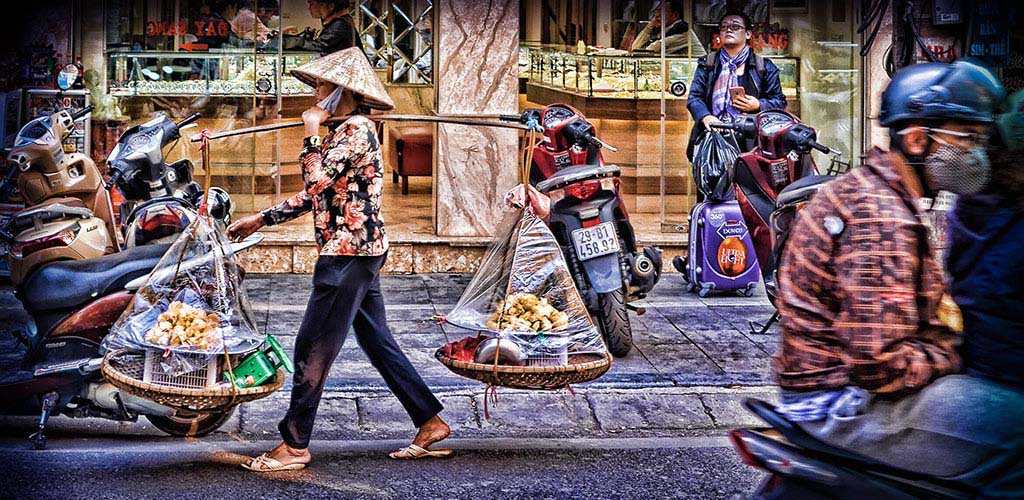
After, enjoying lunch in an elegant French villa that is one of Hanoians favorite restaurants. In the afternoon, visiting Hanoi's bohemian enclave situated on the city's West Lake (Tay Ho), meeting privately with the country's most prominent artists in the home studios, such as Dinh Quan, master of contemporary lacquer art. We will also meet with American Mark Rapoport, a war veteran who left New York and returned to Vietnam under very different circumstances, settling in Hanoi in the 1990s. The long-time expat and his Vietnamese partner founded the antiques gallery, 54 Traditions, and we will enjoy his stories about Vietnam and the antique trade.
In the afternoon there is an arranged, private reception with performance artist Dao Anh Khanh in his sprawling "art compound" on the Red River. Khanh is Vietnam's most renowned performance artist and a gregarious host who will discuss "living life on the edge" in Vietnam's largely traditional society. We will also enjoy a fascinating live performance art piece and traditional music.
Evening cocktail reception at the home of internationally-renowned artists Mai Hien and Anh Khanh, hosted by artist and PBS journalist Nguyen Qui Duc, who has retired to Hanoi after 20 years in San Francisco. Duc has intimate knowledge of the arts community in his native country and is fascinating lecturer on culture.
Dinner at one of the city's finest restaurants, featuring traditional Vietnamese cuisine and contemporary fusion. Accommodation at the Metropole.
Hanoi
Rise at dawn to witness the unique exercise rituals Hoan Kiem Lake, such as badminton and tai chi, your guide facilitating introductions, and photography is you wish—it is an outstanding place for shooting photos. Afterwards, exploring the Old Quarter market as vendors are busy setting up for the day ahead, seeing and learning about ingredients used in Vietnamese cuisine. There are soup stalls open everywhere, and we can stop to sample a small bowl of the country's best pho along with Vietnamese coffee, a perfect high-octane breakfast for Vietnamese on the go (for a real treat, we can also stop into try Hanoi's famous Egg Coffee).
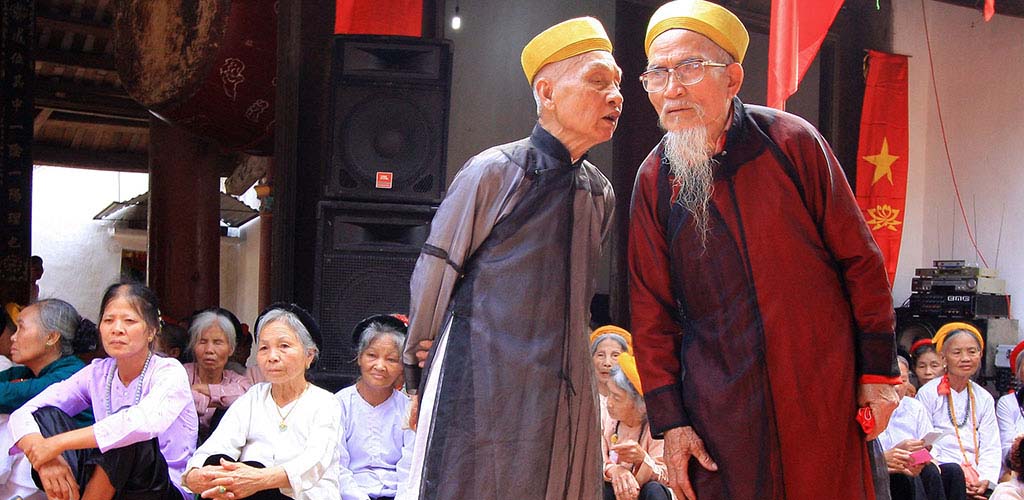
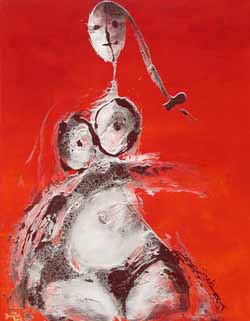 Motion III by Dinh Quan
During our stroll, dropping into to visit with local family in their "tube" home who are accomplished musicians and will play various traditional instruments, teaching you to play the enchanting single-stringed dan bau. Afterwards, enjoying a thrilling cyclo (pedicab) ride through the Old Quarter's maze of busy streets around the lake and alleys to lunch at the busy Quan An Ngon, a lively and popular local place set in French villa with large outdoor dining where you can view various dishes being made in stalls. During our lunch, enjoying an informal Vietnamese language lesson with your guide.
Motion III by Dinh Quan
During our stroll, dropping into to visit with local family in their "tube" home who are accomplished musicians and will play various traditional instruments, teaching you to play the enchanting single-stringed dan bau. Afterwards, enjoying a thrilling cyclo (pedicab) ride through the Old Quarter's maze of busy streets around the lake and alleys to lunch at the busy Quan An Ngon, a lively and popular local place set in French villa with large outdoor dining where you can view various dishes being made in stalls. During our lunch, enjoying an informal Vietnamese language lesson with your guide.
After lunch, visiting the Vietnam National Museum of Fine Arts escorted by Nguyen Qui Duc. The pleasant colonial-era museum features impressive work of the 20th century, including unique Vietnamese styles of lacquer and silk painting, and Duc will provide descriptions and insights into artists and techniques used. After, return to the Metropole for a tour of their recently discovered bomb shelter, a fascinating exhibit, and afterwards enjoying the Metropole's afternoon "chocolate buffet" and tea on the pleasant veranda.
This evening dining in the Old Quarter in one the capital's finest restaurants, with introductions with the "le chef" Didi Corlou of Verticale and Porte d'Annam, both popular restaurants in Hanoi.
Hanoi to Halong Bay
Transfer by private van. After breakfast, depart for Halong Bay by private car through the countryside northeast of Hanoi. On the way, we will stop at Noodle Village, the childhood home of our culinary expert, Diep Leto, where we will meet the residents and see the delicious noodles being made for Vietnam's ubiquitous traditional soup, Pho. After arrival, board our private luxury junk and enjoy lunch while motoring out onto the bay, admiring the memorizing setting of Halong; desolate beach coves, karst islands, hidden lakes, and floating villages. On board, your chef that will introduce new dishes, fresh seafood he buys from fisherman arriving at our boat, as well as familiar ones, such as spring rolls and witnessing the delicate, elaborate carving of fruit and vegetables. In the evening, enjoying an elaborate and delicious dinner banquet prepared by your talented crew.
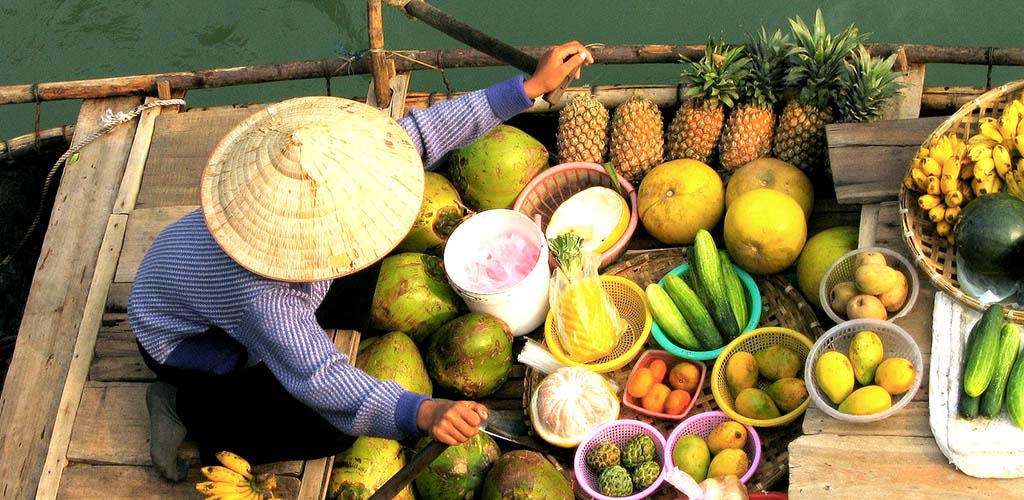
The Gulf of Tonkin was once the haunt of Vietnamese and Chinese pirates, and in Halong Bay the romance of old Vietnam still lingers, with scenic karst islets randomly scattered and the odd red-sailed junks lazing across the languid waters. With 3,000 limestone and dolomite islets sprinkled over an area of 1,500 square kilometers, this UNESCO World Heritage Site is a geographic wonderland.
Dinner banquet prepared on board. Overnight in private cabin.
![]() Private, luxury charter on Halong Bay
Private, luxury charter on Halong Bay
Halong Bay to Hue
Savor the opaque sunrise on misty Halong Bay and be warmed by Vietnamese coffee, noodle soup, and omelettes. Morning cruising past grottoes, cragged coves, inland lagoons, and white-sand beaches before returning to Halong City port. After farewell lunch with crew, return to Noi Bai stopping at an interesting crafts center en route.
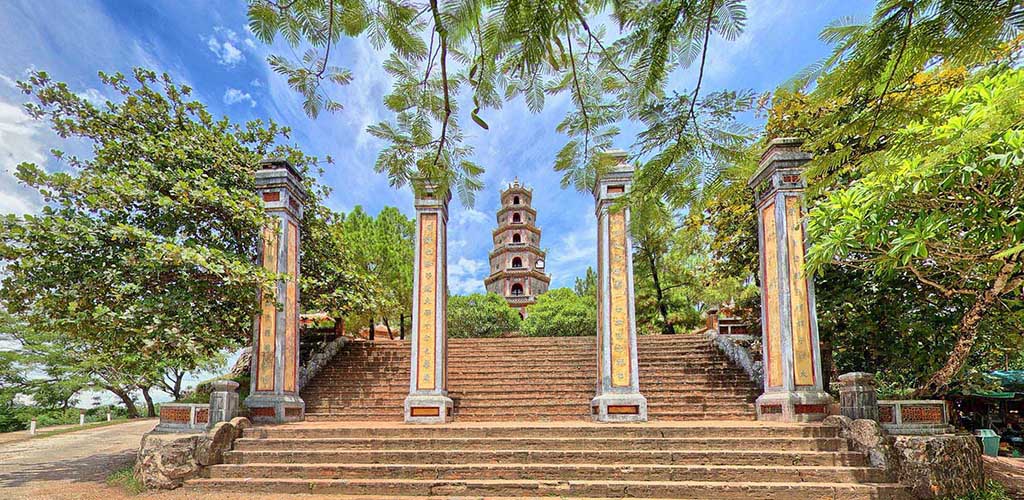
In the afternoon, flying the ancient Imperial Capital, Hue, on Vietnam's central coast. Split by the Perfume River, the city remains pleasantly untouched by the rapid develpment that has affected other cities such as Saigon and Danang. After arrival, transfer to our elegant French Art Deco hotel on the banks of the river with views of the ancient Citadel. Before dinner, we'll enjoy drinks in the rooftop lounge of the city's tallest hotel with stunning, panoramic views over Hue and the Perfume River.
![]() La Residence (Deluxe)
La Residence (Deluxe)
Hue
This morning enjoying breakfast on the large terrace fronting the tranquil Perfume River, before venturing into the scenic countryside to explore two of the finest and most interesting examples of imperial architecture—the elegant tombs of the Vietnamese Emperors Tu Duc and Khai Dinh. After exploring the tombs, return to the Perfume River, where we will rendezvous with a small boat for cruising along and crossing over to the East bank to visit sprawling Thien Mu Pagoda ("Heavenly Lady Pagoda"), Vietnam's most important Buddhist temple set on a hill with panoramic views over the river. Here we will meet with young monks to discuss their unique lives in a contrast to secular, Socialist government.
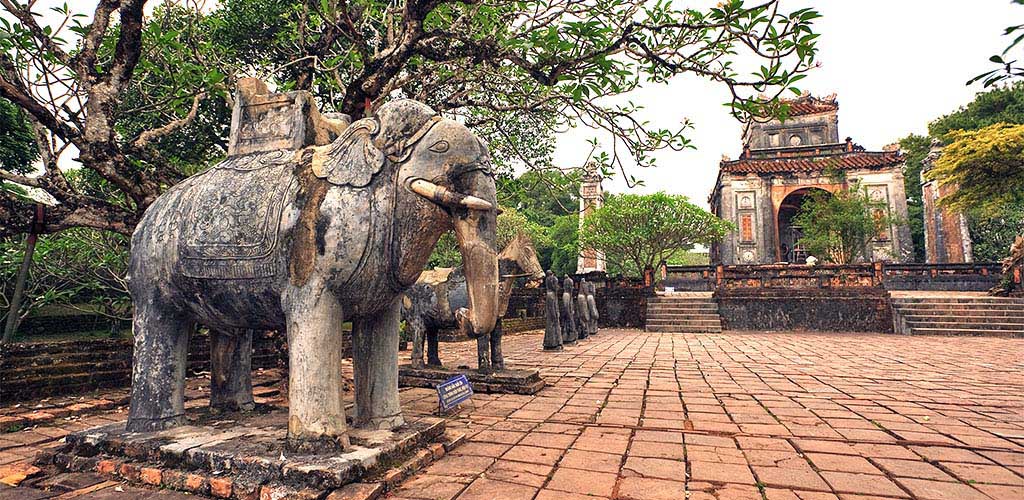
Afterwards, continuing on to visit the high-walled Imperial Citadel, where Vietnam's king's once ruled — a familiar sight from television images during the Tet Offensive in 1968. Hue was the only city during the war to experience fighting and the scars remain in the walls of the citadel and inside the Forbidden Purple City, where little remains from the savage bombing that occurred here during a month of fighting to dislodge North Vietnamese soldiers. In the afternoon, visiting the gallery of Troung Be. return to hotel to freshen up and relax before transport for dinner at the private home of a famous Hue royal artist, Miss Boi Tran, in her elegant villa. Miss Tran recently hosted Anthony Bourdain for an episode of his show.
Cuisine has never been a priority in Hue, where many of the political and religious elite are educated (including Ho Chi Minh). However, Hue is a good place to try two specialties, Banh Mi, a Vietnamese pork sandwich, and Bun Bo Hue, a spicy soup popular throughout the country.
Hue to Hoi An
After breakfast, we depart for Hoi An pausing to take in picturesque beach views at Lang Co Lagoon and the spectacular coastline panorama of the Hai Van Pass. We will also visit the Cham Museum, with a private tour of the world’s finest collection of Cham sculpture that dates from the 2nd to the 15th century, the only signifant collection in the world.
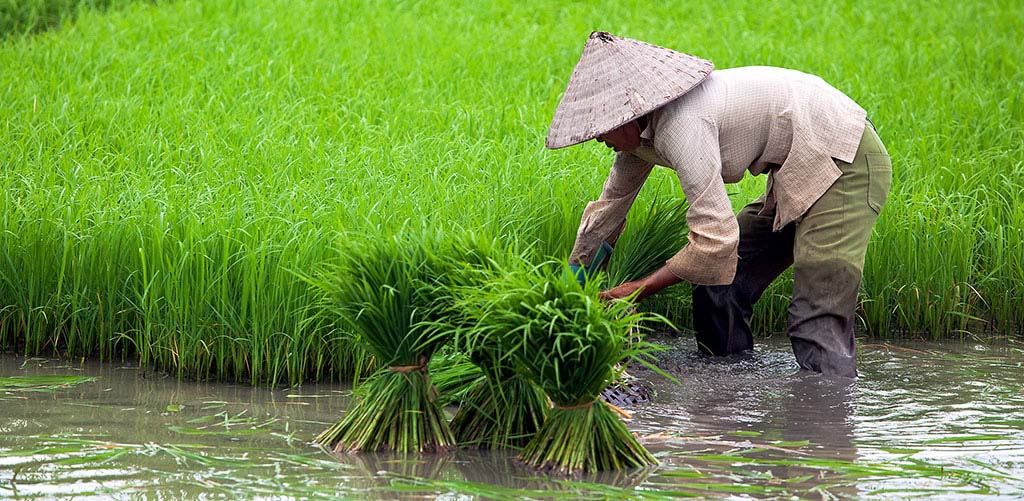
Much of the country was destroyed during wars, but Hoi An survived intact, even through the traumatic 1960s and 1970s. Hoi An has a flourishing custom tailoring trade and the artist community has successfully established itself in the last few years. Afternoon exploring this charming arts and crafts town and its mix of Japanese, Chinese and Vietnamese architecture. In the afternoon, meeting with craftsmen and artists in their home galleries in the old quarter area along the riverfront where we'll also spy locals at leisure, playing Chinese checkers and lighting lanterns.
Dinner overlooking the Thu Bon River.
![]() Anantara (Deluxe River View)
Anantara (Deluxe River View)
Hoi An
Sightseeing on foot, including Hoi An's bustling riverfront market, decorative pagodas, art studios, crafts shops, and colorful temples. Lunch featuring delicious Cao Lau Soup, a specialty of Hoi An. The central market is a lively scene and at dusk, enjoying a cruise on the Thu Bon river is a must to glimpse the countryside around the town, and further out, beach combing on the soft white sands of Cua Dai beach, and relaxing by preference. By preference, this morning attending a delightful yet rigorous cooking class at the restaurant of Tring Diem Vy or "Miss Vy" who in the 90s almost single handedly jump started the now thriving culinary scene Hoi An is. The class includes a market trip and we'll have a chance to meet Miss Vy during our visit.
Tonight, enjoying a special farewell dinner on the banks of the Thu Bon River.
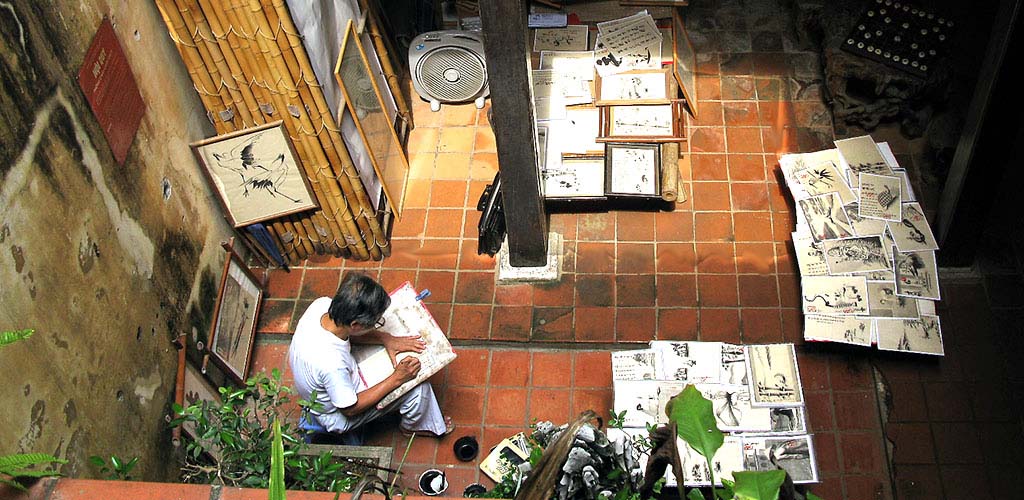
Hoi An provides the perfect stop in Vietnam; a small, walkable city with interesting shops, galleries, riverfront cafes, large market, small museums, music lounges, excellent restaurants, and an interesting night life much of it traditional, such as older men playing board games on the street and the lighting fire lanterns. Hoi An also features excellent cuisine and pleasant dining in the old quarter and along the river.
Flash fashion: The textiles are not of high quality, but the overnight tailors real skill is duplicating garments you've brought from home o perhaps being fitted for a Vietnamese dress (Ao Dai). The best tailor is Ya Ly (which due its size is also the most reliable on delivery time). Ya Ly, 47 Tran Phú, Phone: (84-510) 3861 119.
Hoi An to Siem Reap (ANGKOR)
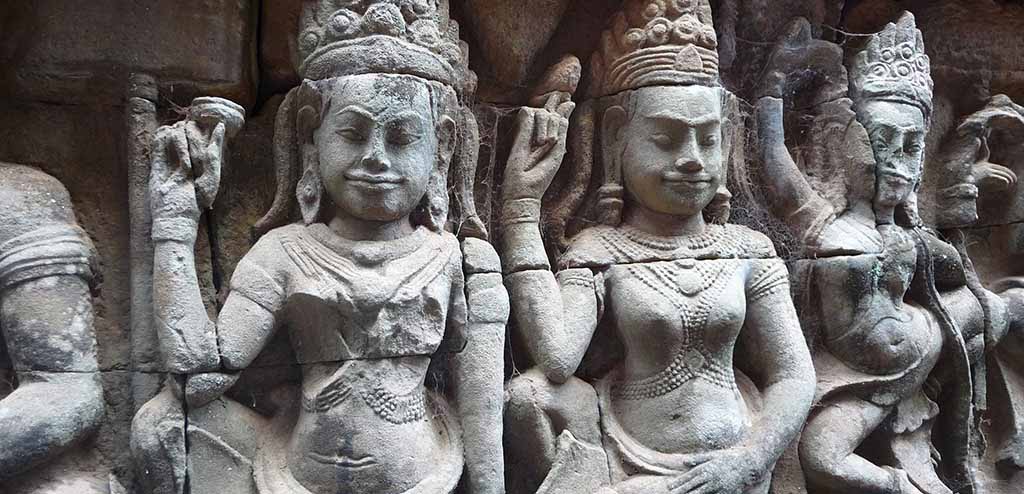
Following breakfast, early morning drive to Danang for our one-hour flight to Seim Reap, a small town that serves as base for exploring the temple complex.
![]() Belmond La Residence d'Angkor (Deluxe Pool View)
Belmond La Residence d'Angkor (Deluxe Pool View)
A N G K O R
Before dawn, visiting the most enigmatic of temples, Ta Prohm. Dedicated by king Jayavarman VII largely to his mother, but also other family members, Ta Prohm ("ancestor Brahma") has been abandoned to the elements, a reminder that while empires rise and fall, the riotous power of nature marches on, oblivious to the dramas of human history. Left much as it was found by French explorer Henri Mouhout in 1860, the tentacle-like silk cotton and fig tree roots here are slowly strangling the surviving stones of the ancient monastery and university, creating a surrealistic juxtaposition (especially in the morning light), a perfect time for photography and to marvel at the special setting of the ancient monastic complex (one of the largest sites in Angkor) before the tour buses arrive.

After soaking up the unique atmosphere of Ta Prohm, exploring nearby Ta Keo ("tower of crystal"), one of the great "temple-mountains" of Angkor. Like Pre Rup, Ta Keo has five sanctuary towers arranged in a quincunx, built on the uppermost level of five-tier pyramid consisting of overlapping terraces (a step pyramid), surrounded by moat, as a symbolic depiction of Mount Meru. The walls of Ta Keo are plain, as the temple was abandoned just as carvings were started on its large sandstone blocks (one theory posits it was stopped after lightening had struck it). This simplicity separates Ta Keo from all other Angkor temples.
Following Ta Keo, visiting Chau Sey Devada and its sister temple, Thommanon, a pair of symmetrical Hindu shrines strategically located outside Angkor Thom's east gate. Thammanon was restored extensively and the small and elegant temple is worth a short visit for its lovely carved figurines.
In the afternoon, exploring the immense walled city Angkor Thom, the masterpiece of King Jayavarman VII. Following the occupation of Angkor by the Chams from 1177 to 1181, the new king dictated the building of an impregnable fortress at the heart of his empire and the scale of their work is staggering, immediately overwhelming visitors upon arrival at the city’s gates. The causeway is lined by an intricate bridge depicting the Churning of the Ocean of Milk from Hindu mythology in which the devas (gods) and asuras (devils) play tug of war with a naga (seven-headed serpent) to “milk” the elixir of immortality.
After, exploring the Terrace of the Leper King. This intricately carved platform was the royal crematorium and the statue that was originally thought to be the leper king is now believed to be Yama, the god of death. Continue along the Terrace of Elephants, originally used as a viewing gallery for the king to preside over parades, performances and traditional sports. At the southern end lies the Baphuon, once of the most beautiful temples at Angkor, dating from the reign of Uditayavarman 1 in the 11th century. It has undergone a massive renovation by the French and is now once again open for viewing.
The climax of Angkor Thom is the enigmatic and enchanting temple of the Bayon. At the exact center of Angkor Thom, this is an eccentric expression of the creative genius and inflated ego of Cambodia’s most celebrated king. Its fifty four towers are each topped off with the four faces of Avalokiteshvara (Buddha of Compassion), which bear more than a passing resemblance to the king himself. The colossal heads stare down from every side, exuding power and control with a hint of compassion, just the mix required to keep a hold on such a vast empire. Before clambering upwards, unravel the mysteries of the bas-reliefs, with their intricate scenes of ancient battles against the Chams and their snapshot of daily life during the Angkor period.
In the afternoon, enjoying a private encounter over tea with Cambodian artist Lim Muy Theam in his gallery and garden.
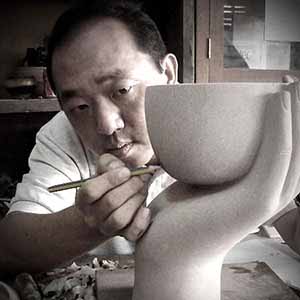
For more than 20 years well-known artist Lim Muy Theam ("Theam") has sought to revive the Cambodian fine arts and craft sector, including founding of a art cooperative which provides for apprentices internships in art. Learn of Theam’s vision as he shares his deep artistic and technical knowledge of Khmer art and local culture, and about Cambodia's artistic legacy. We will visit Theam’s house gallery to experience and view his art pieces firsthand, including paintings, sculptures, or lacquer ware.
The day concludes with a dramatic panorama view at sunset from the nearby summit of Phnom Bakheng, overlooking Angkor Wat. This hill with a favorable view tends to be crowded at dusk and we can choose otherlocations by preference for sunset photography.
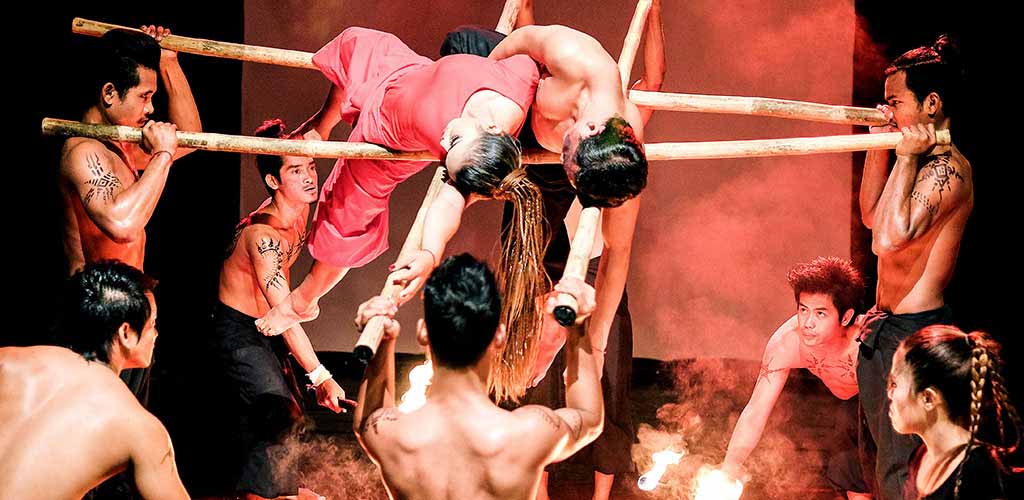
![]() Tonight, enjoying an enthralling acrobatics, circus acts, and drama show by the Phare troupe, a non-profit supporting children through the arts.
Tonight, enjoying an enthralling acrobatics, circus acts, and drama show by the Phare troupe, a non-profit supporting children through the arts.
![]() In the evening, restaurant recommendations include Viroth's, serving up traditional Khmer cuisine, Abacus (with owner Renaud on hand to discuss wine), and Cuisine Wat Damnak (with wine pairings from Johannes Rivieres).
In the evening, restaurant recommendations include Viroth's, serving up traditional Khmer cuisine, Abacus (with owner Renaud on hand to discuss wine), and Cuisine Wat Damnak (with wine pairings from Johannes Rivieres).
Siem Reap's town center transforms into a sprawling night market in the evening, with a wide variety bric-a-brac but also quality hand-crafted items and some unusual vendors, including "fish-spa," a highly ticklous experience in which fish polish the skin on your feet.
A N G K O R
Banteay Srei, Golden Silk Farm, and the Landmine Museum, which we will visit afterwards,
Afterwards, explore the petite temple, Banteay Srei. This petite pink temple is known as "the jewel of Khmer art" for its fine Angkor-era sculpture. The elaborate carvings here are the finest found in Cambodia and the name translates as "Fortress or citadel of the Women," thanks to the intricate detail here, which Khmer’s consider too fine to have been crafted by hands of men.
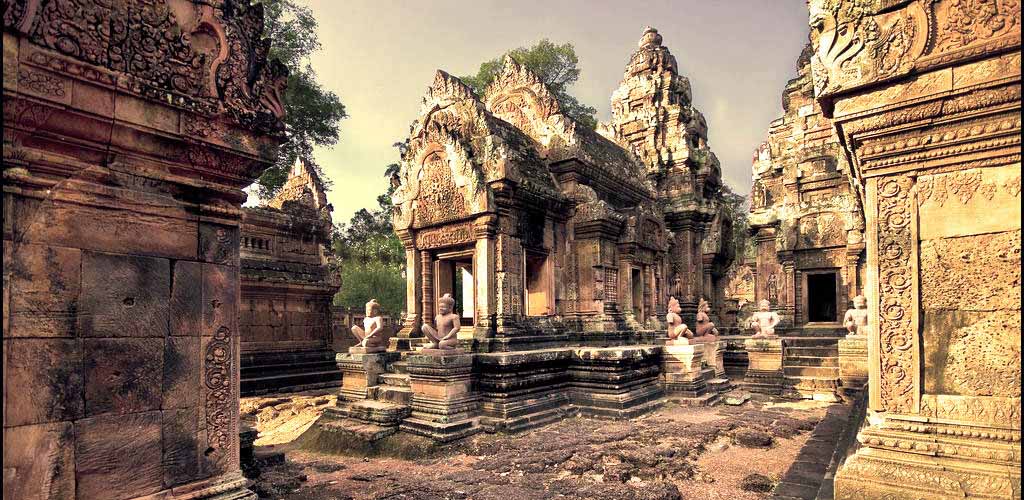
Banteay Srei
Originally believed to date from the latter part of the Angkor period, inscriptions at the site suggest it was built by a Brahman in 967. However, some architectural historians have suggested that the inscriptions may date from an earlier structure on this site. It's interesting to note this early temple (consecrated on the 22nd of April, 967 A.D.), Banteay Srei was the only major temple at Angkor not built by a monarch, it's construction is credited to a courtier named Yajnavaraha.
On the return to the temples, stopping to visit the unique Landmine Museum, a non-profit education project seeking to spread information about the country's long, terrible history with landmines. The museum was founded by ex Khmer Rouge child-soldier Aki Ra as a way to tell the world about the horrors landmines had inflicted on his native Cambodia, offering tourists and Cambodians the chance to see (safe) landmines up close, understand how they work, and what they can do to help rid Cambodia and the world of their continuing threat.
The Golden Silk factory is also nearby and we can meet the charming, deeply altruistic Cambodian and French couple who founded the farm, which now supports over one hundred local villagers.
Afterwards, we may stop by a local school to spend time teaching English, a critical skill for entering the local tourist industry. Late afternoon at leisure before dinner.
![]() In the evening, restaurant recommendations include Viroth's, serving up traditional Khmer cuisine, Abacus (with owner Renaud on hand to discuss wine), and Cuisine Wat Damnak (with wine pairings from Johannes Rivieres).
In the evening, restaurant recommendations include Viroth's, serving up traditional Khmer cuisine, Abacus (with owner Renaud on hand to discuss wine), and Cuisine Wat Damnak (with wine pairings from Johannes Rivieres).
Siem Reap to Luang Prabang, Laos
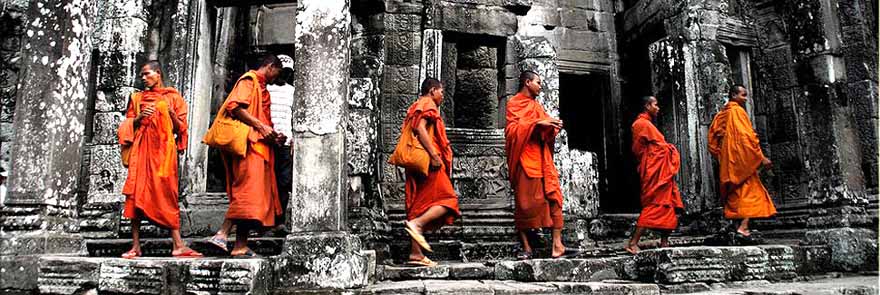
![]() Here then are those temples which for so long seemed like visions... Here are the foundations, the plinths, the galleries, the extraordinary domes resembling multi-ringed tiaras
Here then are those temples which for so long seemed like visions... Here are the foundations, the plinths, the galleries, the extraordinary domes resembling multi-ringed tiaras![]() Claude Farrere, L'illustration, 1931
Claude Farrere, L'illustration, 1931
 At dawn, journey to the grandest of all temples, Angkor Wat. Built in the 12th century by King Suryavarman II, Angkor Wat marks the climax of Khmer architecture. It is believed to be the world's largest religious building and a perfect fusion of symbolism and symmetry and is a source of pride and strength to all Khmer people. At the center, Angkor Wat was the centerpiece of what is now thought to have been the largest pre industrial city in the world (Angkor is a Khmer term meaning "city"), with an elaborate system of infrastructure connecting an urban sprawl of at least 1,000 square kilometers.
At dawn, journey to the grandest of all temples, Angkor Wat. Built in the 12th century by King Suryavarman II, Angkor Wat marks the climax of Khmer architecture. It is believed to be the world's largest religious building and a perfect fusion of symbolism and symmetry and is a source of pride and strength to all Khmer people. At the center, Angkor Wat was the centerpiece of what is now thought to have been the largest pre industrial city in the world (Angkor is a Khmer term meaning "city"), with an elaborate system of infrastructure connecting an urban sprawl of at least 1,000 square kilometers.
After consolidating his political position through military campaigns, diplomacy, and a firm domestic administration, King Suryavarman launched into the construction of Angkor Wat as his personal temple mausoleum. With walls nearly one-half mile long on each side, Angkor Wat grandly portrays the Hindu cosmology, with the central towers representing Mount Meru, home of the gods; the outer walls, the mountains enclosing the world; and the moat, the oceans beyond. Suryavarman had the walls of the temple decorated with bas reliefs depicting not only scenes from the story of Ramayana—a Hindu classic that details the battle between good and evil—but also from the life of his own imperial court. In one of the scenes, the king himself is portrayed as larger in size than his subjects, sitting cross-legged on an elevated throne and holding court, while a bevy of attendants make him comfortable with the aid of parasols and fans.
![]() Read more about the collapse of the Khmer Empire
Read more about the collapse of the Khmer Empire
Following Angkor, return to Siem Reap for lunch and relaxing by the pool, or last-minute sightseeing in town before afternoon flight to Luang Prabang . After arrival in sleepy Luang Prabang, clear immigration and meet escort for transfer to resort. Tonight, dining at La Residence with magnificent views over the town, or transport into town to dine at l'Elephant.

LUANG PRABANG
There can be few more enchanting places on earth than the ancient Lao capital of Luang Prabang, sitting at the confluence of the Mekong and Nam Khan rivers, surrounded by glittering temples , a profusion of tropical palms. Its charms are as soothing as the temple bells that echo along its narrow lanes at dawn; its panoramic views as timeless as the waters of the Mekong river that flow down down through Laos before emptying out in the South China Sea.
"Through the scratched window he could see the sun reflecting golden from half a dozen temple stupas, two rivers converging around the town, and a white shrine, like a delicious merangue, sitting on top of a hill overlooking the old royal palace." The Thirty Three Teeth by Colin Cotterill
In the afternoon, flying to Luang Prabang—Northern Laos' bucolic remote outpost and UNESCO World Heritage Site. A small, French colonial town, that to the delight of travelers, has largely been bypassed by the rapid and chaotic developing in neighboring countries and it's capital city, Vientiane.
After arrival, clear immigration (visa processed upon arrival), then meet escort for transfer to resort (20 minutes). At dusk, exploring the small town and riverfront by foot before a baci welcoming ceremony with a local family in their home.
![]() Belmond La Residence Phuo Vao (Deluxe Mountain View)
Belmond La Residence Phuo Vao (Deluxe Mountain View)
Luang Prabang
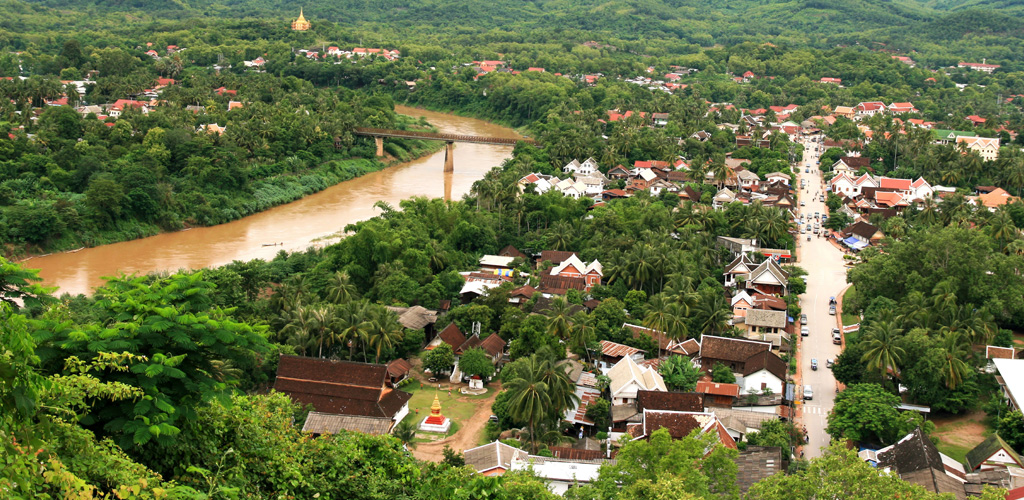
Rising early before dawn to witness Luang Prabang's sublime ritual — the traditional alms procession of monks passing slowly through town. We'll visit a monastery to witness morning prayers and preparation for alms, and afterwards, meeting privately with novice monks to discuss their way of life, share ideas questions about their impressions of your lifestyle, beliefs, and culture and theirs. After calming our minds with meditation, exploring Wat Xieng Thong ("Golden Monastery"), the most exquisite of Luang Prabang's temples.
Luang Prabang, a French colonial outpost and UNESCO World Heritage site with architecture from another time that is among the most well preserved in Asia. After breakfast, begin exploration of Asia's most pleasant town, by bicycle, through the downtown and riverfront, pausing to admire the French row buildings and major temples dating to the 15th century such as Wat Xieng Thong — a masterpiece of Buddhist architecture, Royal Palace structures, and French-colonial period buildings, many with unique Asian motifs. Also visiting the colorful local market, Phusi, and visiting other sites in town by preference, such as the antique gallery, Boupha, visiting with owner Pathana Boupha whose father was high ranking officer before 1975.
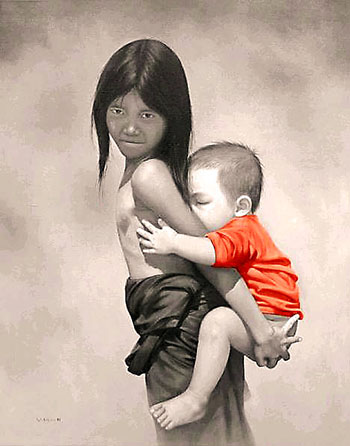
For lunch, there are numerous cafes and informal restaurants serving delicious local favorites inside the pleasant courtyards of French villas.
Following lunch along the river, continued exploration of the small town, savoring the well-preserved French and religious architecture, small cafes, shops, and crafts outfits.
In the early evening, strolling through the sprawling night market, one of Southeast Asia's most interesting and authentic, with an outstanding selection of hilltribe textiles and crafts—the ideal place to find a souvenir from the trip. Balance of afternoon relaxing at the resort before dinner, a special baci welcoming ritual in the home of a local family. After the ceremony, dining at one of the town's finest restaurants before strolling the pop-up night market which features blocks of local, handmade goods, including hihg-quality Ikat textiles.
In the afternoon, attend a private baci ceremony in the home of a local family, a Lao traditional welcoming ceremony.
![]() Read more about Luang Prabang
Read more about Luang Prabang
Luang Prabang's night market appears at dusk over several blocks of the central drag and is one of the most delughtful and authentic in Southeast Asia, with local handicrafts, include fine wood carvings and Ikat textiles. Bargaining is customary.
Luang Prabang
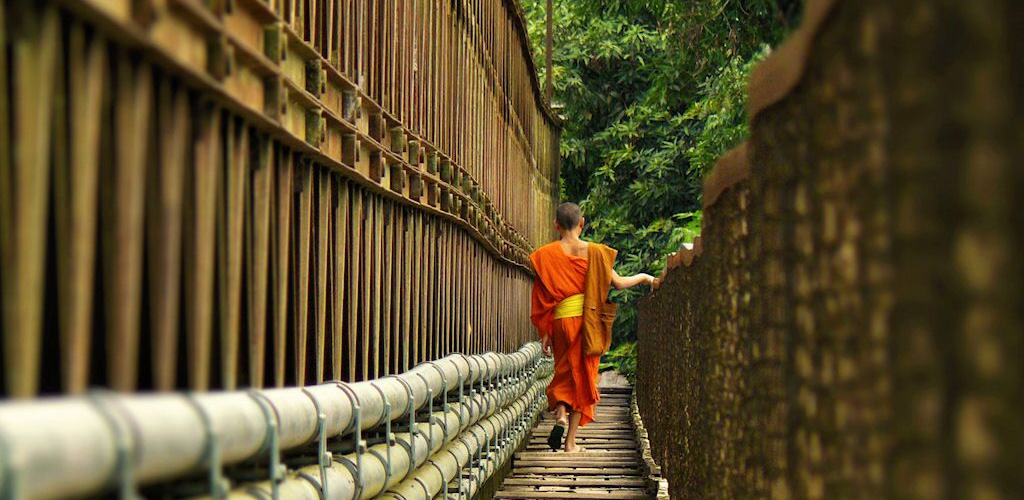
After breakfast, exploring the busy morning market, a traditional market filled with things you don't see usually, such as snakes, insects, birds, rats, bee's wax and other fresh countryside herbs and vegetables. We will then take you to a local noodle stall or porridge shop (depending on your preference) to have the most local breakfast you'll have.
In the afternoon, enjoying a pleasant cruise on the Mekong River before our farewell dinner in town.

Departure
After breakfast, transfer to the airport for departure flight to Bangkok for overnight.
